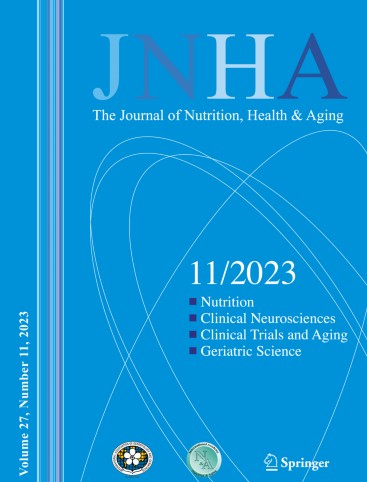在老年中心和社区中心就餐的美国成年人的饮食质量:Nhanes 2009-2018。
IF 4.3
3区 医学
Q1 GERIATRICS & GERONTOLOGY
引用次数: 0
摘要
背景:随着年龄的增长,认知和身体残疾的恶化可能会导致老年人在日常生活活动中寻求帮助。社区/老年中心为老年人的老龄化提供支持,提供包括膳食计划在内的各种服务。我们利用全国健康与营养调查(2009-2018 年)的数据,旨在研究社区/老年中心膳食计划是否与美国 60 岁或以上老年人营养暴露的改善有关:方法:比较了在社区/养老中心就餐者和普通人群的营养暴露和基于营养素的膳食指数,包括膳食质量评分(DQS)和食物营养素指数(FNI)。营养素摄入量与《美国人膳食指南》规定的每日营养目标进行了对比:这项研究包括 6261 名年龄≥60 岁的参与者,其中 n = 421 人报告在社区/养老中心就餐。后者主要为女性,近 45% 为丧偶或离异。根据粗略分析,在社区/养老中心就餐并不会提高饮食质量。然而,在对潜在的社会人口混杂因素以及酒精、吸烟和能量摄入进行调整后,出现了性别差异,显示在社区/老年活动中心就餐的男性的 FNI 得分明显更高(调整后的 FNI 预测值为 61.71 [CI:58.0] :61.71 [CI:58.55-64.88] vs 57.64 [CI:56.86-58.41] 分):结论:在社区/老年活动中心就餐与老年男性营养素摄入量的提高有关,而在女性中却没有发现更好的饮食质量。社区/老年活动中心可能会在提高弱势群体的饮食质量方面发挥关键作用。本文章由计算机程序翻译,如有差异,请以英文原文为准。
Diet quality in U.S. adults eating in senior and community centers: NHANES 2009-2018
Background
With advancing age, the worsening of cognitive and physical disabilities may lead older adults to seek help in their daily living activities. Community/senior centers support older adults during aging, offering a wide variety of services, including meal programs. Using data from the National Health and Nutrition Examination Surveys (2009–2018), we aimed to examine whether community/senior center meal programs were associated with an improved nutritional exposure in U.S. adults aged 60 years or older.
Methods
Nutrient exposure and nutrient-based dietary indexes, including the Diet Quality Score (DQS) and the Food Nutrient Index (FNI) were compared between those eating meals at community/senior centers and the general population. Nutrient intakes were contrasted to the daily nutritional goals from the Dietary Guidelines for Americans.
Results
This study included 6261 participants aged ≥60 years, thereof n = 421 reporting community/senior center meals. The latter were predominantly female and almost 45% were widowed or divorced. Eating at community/senior centers did not result in a better diet quality in crude analyses. After adjustment for potential sociodemographic confounders as well as alcohol, smoking and energy intake, however, sex-specific differences emerged, revealing significantly higher FNI scores in males eating at community/senior centers (adjusted FNI predictions: 61.71 [CI:58.55–64.88] vs 57.64 [CI:56.86−58.41] points).
Conclusions
Eating at community/senior centers was associated with an improved nutrient exposure in older men, whereas no better diet quality was found in women. Community/senior centers may play a pivotal role when it comes to the diet quality of a particularly vulnerable group of the population.
求助全文
通过发布文献求助,成功后即可免费获取论文全文。
去求助
来源期刊
CiteScore
7.80
自引率
3.40%
发文量
136
审稿时长
4-8 weeks
期刊介绍:
There is increasing scientific and clinical interest in the interactions of nutrition and health as part of the aging process. This interest is due to the important role that nutrition plays throughout the life span. This role affects the growth and development of the body during childhood, affects the risk of acute and chronic diseases, the maintenance of physiological processes and the biological process of aging. A major aim of "The Journal of Nutrition, Health & Aging" is to contribute to the improvement of knowledge regarding the relationships between nutrition and the aging process from birth to old age.

 求助内容:
求助内容: 应助结果提醒方式:
应助结果提醒方式:


